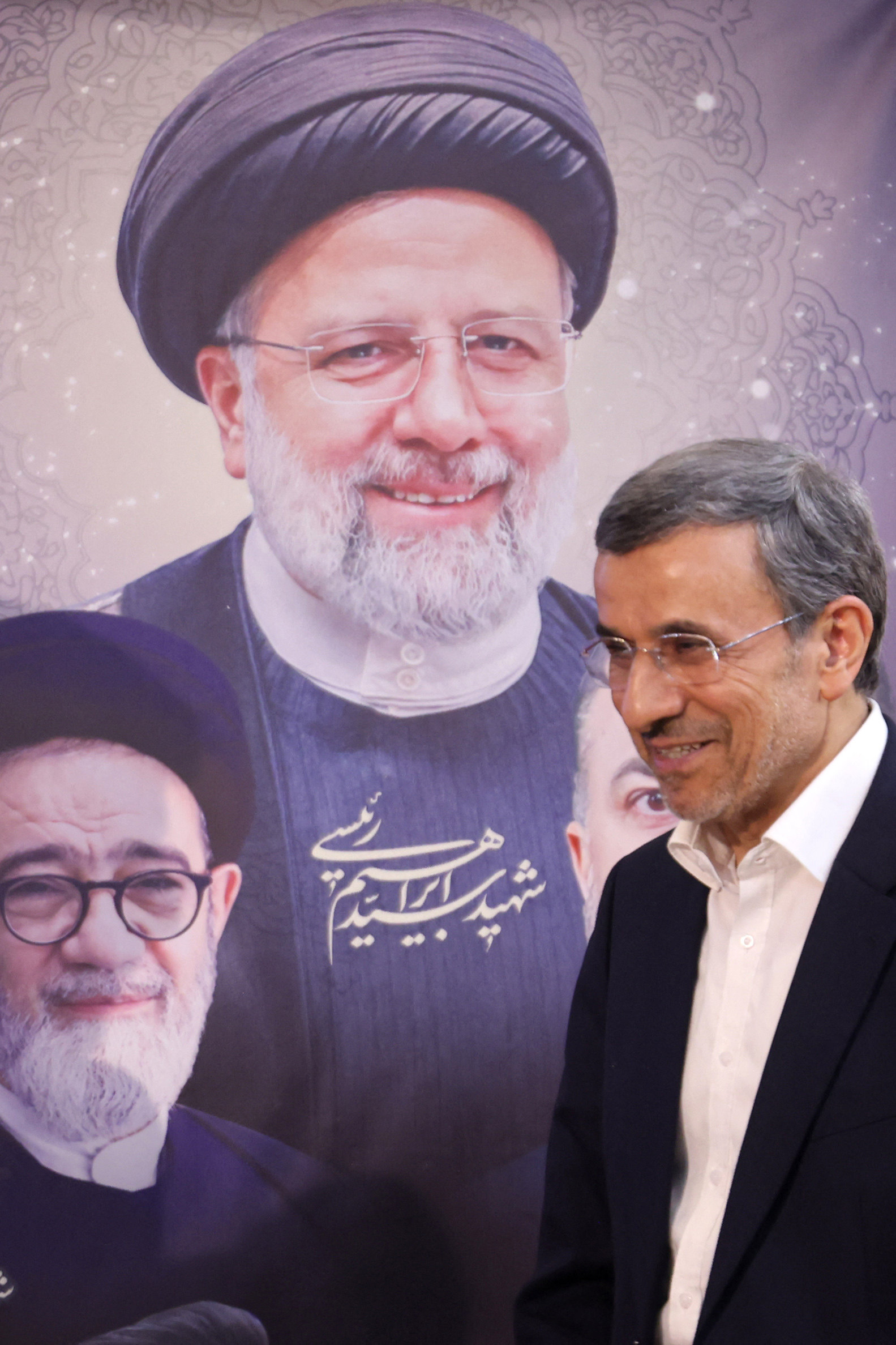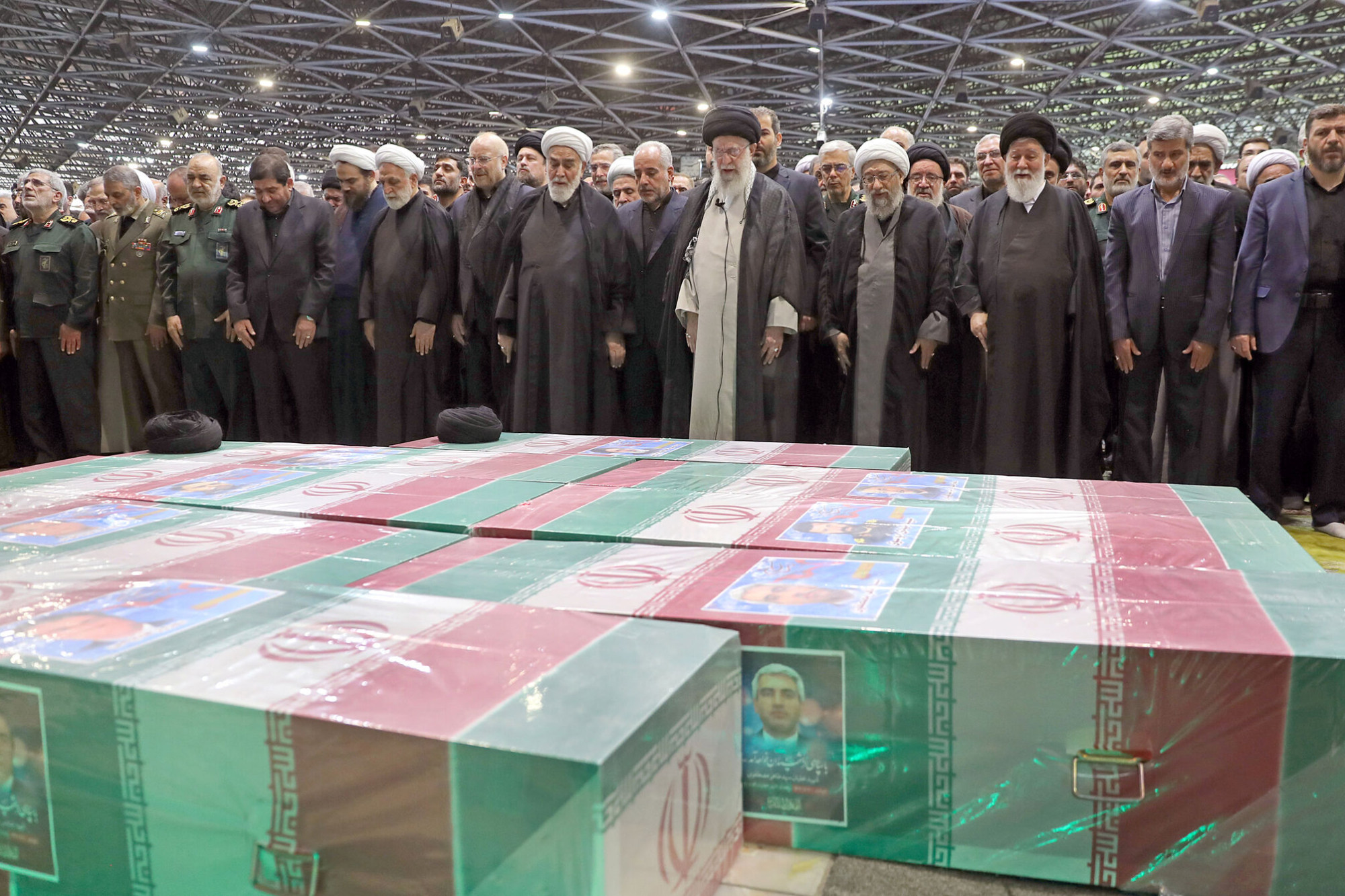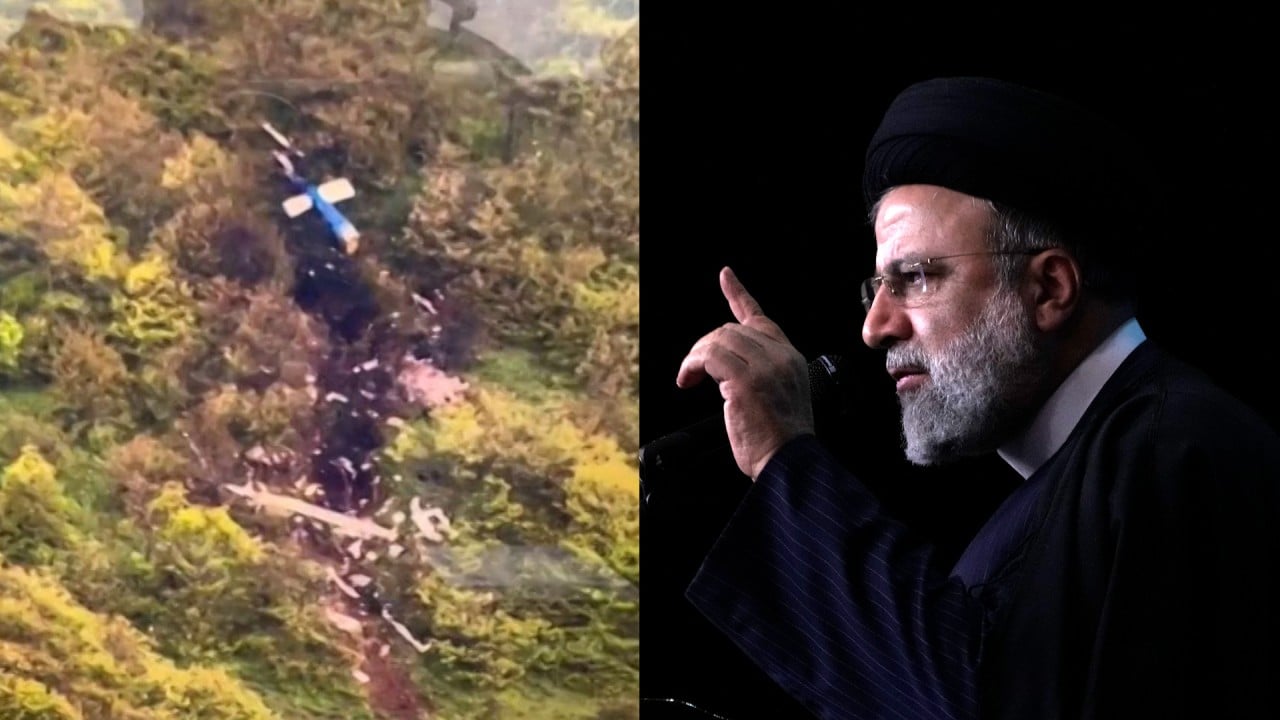Meanwhile, Iran’s support of militia proxy forces throughout the wider Mideast have been in increased focus as Yemen’s Houthi rebels attack ships in the Red Sea over the Israel-Gaza war in the Gaza Strip.
Ahmadinejad is the most prominent candidate to register so far. Speaking after his registration, he vowed to seek “constructive engagement” with the world and improved economic relations with all nations.
“The economic, political, cultural and security problems are beyond the situation in 2013,” Ahmadinejad said, referring to the year he left the presidency after two terms.
After speaking to journalists in front of a bank of 50-odd microphones, Ahmadinejad said, his finger in the air: “Long live the spring, long live Iran!”
Before his arrival at Iran’s Interior Ministry, his supporters chanted and waved Iranian flags. They quickly surrounded Ahmadinejad, 67, shouting: “God is the greatest!”
He descended the stairs at the ministry, showing his passport as is custom to dozens of photographers and video journalists on hand for the registration process. As a woman processed his candidacy, he sat, turned to the journalists, nodding and smiling for the cameras. He was expected to give remarks after concluding his registration.
An election is planned June 28 to replace Khamenei’s hardline protégé President Ebrahim Raisi, who died in a helicopter crash in May along with seven other people.
Former parliament speaker Ali Larijani, a conservative with strong ties to Iran’s former relatively moderate President Hassan Rowhani, has already registered, as has former Iranian Central Bank chief Abdolnasser Hemmati, who also ran in 2021.
Who else will seek to run remains in question. The country’s acting president, Mohammad Mokhber, previously a behind-the-scenes bureaucrat, could be the front runner because he has already been seen meeting with Khamenei.

Also discussed as a possible aspirant is former reformist President Mohammad Khatami, but, as with Ahmadinejad, whether he would be allowed to run is another question.
The five-day registration period will close on Tuesday, and the Guardian Council is expected to issue its final list of candidates within 10 days. That will allow for a shortened two-week campaign before the vote in late June.
Ahmadinejad previously served two four-year terms from 2005 to 2013. Under Iranian law, he became eligible to run again after four years out of office, but he remains a polarising figure even among fellow hardliners.
His disputed re-election in 2009 sparked massive “Green Movement” protests and a sweeping crackdown in which thousands of people were detained and dozens were killed.

Abroad, he became a caricature of Western perceptions of the Islamic Republic’s worst attribute, questioning the Holocaust, insisting Iran had no gay or lesbian citizens and hinting Iran could build a nuclear weapon if it chose to do so.
But Ahmadinejad remains popular among the poor for his populist efforts and home-building programmes.
Since leaving office, he has raised his profile via social media and written widely publicised letters to world leaders. He has also criticised government corruption, though his own administration faced corruption allegations and two of his former vice presidents were jailed.
Khamenei warned Ahmadinejad in 2017 that his standing for office again would be a “polarised situation” that would be “harmful for the county”. Khamenei said nothing during Ahmadinejad’s 2021 attempt, when his candidacy was rejected by the 12-member Guardian Council, a panel of clerics and jurists ultimately overseen by Khamenei.
That panel has never accepted a woman or anyone calling for radical change to the country’s governance.
That panel could reject Ahmadinejad again. However, the race to replace Raisi has yet to draw a candidate with clear, overwhelming support from Khamenei.


